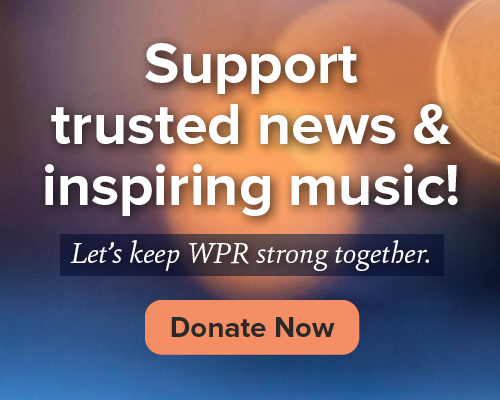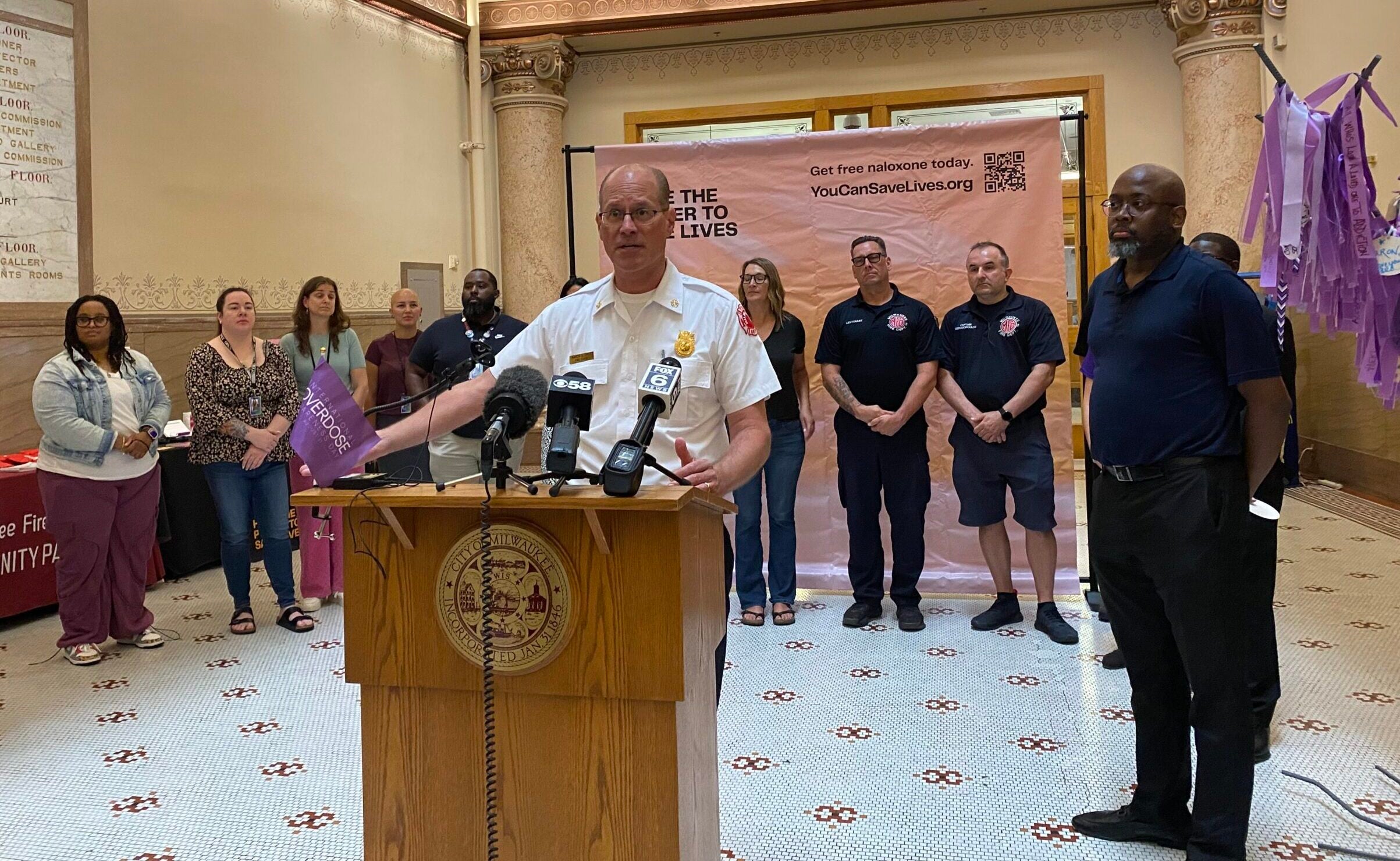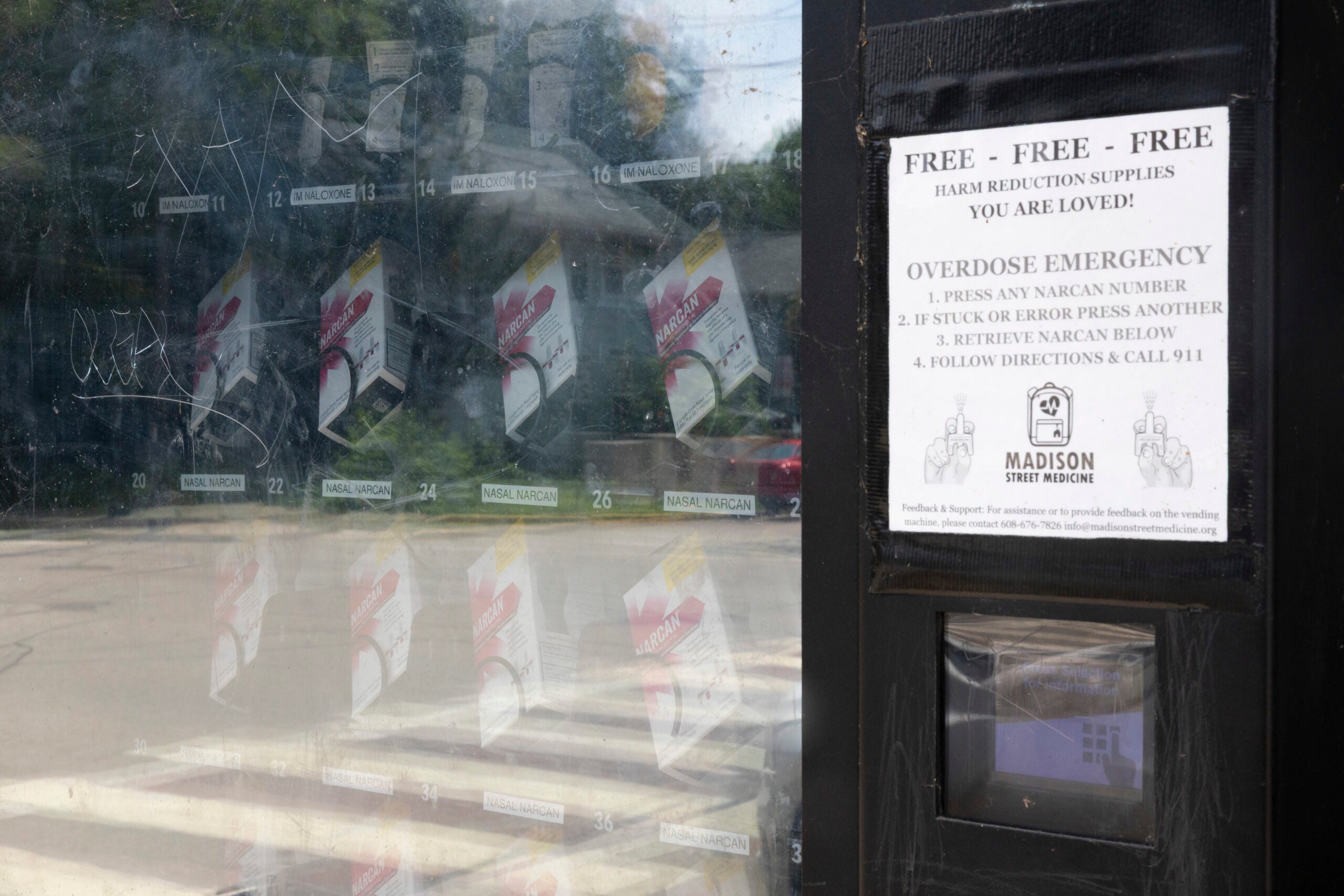Although opioid overdose deaths have been dropping in Wisconsin since their peak in 2022, and fentanyl-related deaths specifically are dropping nationally, Wisconsin still has more than 10 times the opioid-related deaths than it did just 25 years ago.
Dr. Chris Eberlein, an emergency room physician in La Crosse, has seen the devastation up close.
“There are still people dying throughout our state and country every day from this epidemic, and truly, my condolences to those that have lost people in this,” said Eberlein, who works at Emplify Health, formerly Gunderson. “It’s impacted me, as well.”
News with a little more humanity
WPR’s “Wisconsin Today” newsletter keeps you connected to the state you love without feeling overwhelmed. No paywall. No agenda. No corporate filter.
More resources are on the way. Wisconsin will receive $21.8 million as part of a settlement with Kroger for the retailer’s role in the opioid crisis in the state. Kroger also agreed to monitor “suspicious activity” at its pharmacies.
The money from Kroger is part of the total $780 million Wisconsin will receive in settlement money through 2038 resulting from national litigation against different entities involved in perpetuating the opioid crisis.
Eberlein is also the co-founder of Alliance to Heal, a group in La Crosse that helps individuals suffering from opioid addiction. He is hopeful that the added funding will help the state continue to turn the tide. But he noted that there’s a lot more work to be done and the resources came too late for many.
“The money won’t bring them back, but it will hopefully help us so other people don’t suffer,” he said.
Eberlein spoke with “Wisconsin Today” about how the opioid crisis has evolved and how health care workers are responding to it.
The following has been edited for clarity and brevity.
On the settlement funds
Settlement funds, obviously, are welcome. Funding is really important as we go forward, trying to continue to improve where we are with the opioid epidemic.
We have seen improvement in the last year … [which is] the first time since … about 2012 [that] we’ve seen a reduction in opioid overdose deaths. So that was very welcome, but we still have a long way to go.
On the change Eberlein has seen since the beginning of his career in 2001
We started to see this really increase in the early 2000s. When I first started training, opiate overdoses were relatively rare.
But then we had this wave of overdoses, and initially … it was from prescription medications, which … was really upsetting as a provider. Are we doing harm here? And then we tackled that head on with education and the PDMP [Prescription Drug Monitoring Program]. And then we saw the epidemic change gears and move into heroin and fentanyl, and it just continued to be fueled by that.
I think that was a really, really important piece in getting in front of the prescription part of this. But then we had that shift to … heroin first, and then fentanyl. That was really deadly, and we’re still seeing that. Twenty years ago, the Narcan dose was like 0.1 milligrams, now we’re up to 0.4 to 0.8 initial dosing, so a multitude increase in what it takes to reverse these overdoses.
On the recent decrease in deaths
Any decrease is significant. But this one we have been seeing across the country — a 20 to 30 percent reduction year over year.
In this last year in La Crosse County, we were very fortunate. We had a 70 percent reduction in our overdose deaths here. Still waiting to see if that holds for the next year, both across the country and locally, because we’re really not completely sure what to attribute that to. [There are a] lot of theories. One of the most prevalent is all the work that we’ve done has finally caught up. We knew it would take a long time to get ahead of this and start to make things change, but time will tell if this continues to be a positive trend.
On the drop in fentanyl-related deaths
I think we’ve done a really good job with harm reduction. The access to Narcan has really made a big difference. Probably the key component of this education is … not using alone because you can’t give yourself Narcan when you’re unattended.
If someone wants to get help, you can’t have a bunch of barriers to … that help. So continually breaking down the barriers so it is very easy for someone to find the resources they need and get the help they need [is important]. We’re still not there yet. There are still barriers that we have to work on.
How to get help
If you are struggling with addiction, call 211 or the crisis hotline at 988 to be connected with resources.
The opioid reversal drug Narcan can be purchased at pharmacies without a prescription. It’s also available for free through Wisconsin’s Narcan Direct program. Click here for a map of where it’s available in Wisconsin.
Naloxone, the generic form of Narcan, can be administered via injection or a nasal spray.






